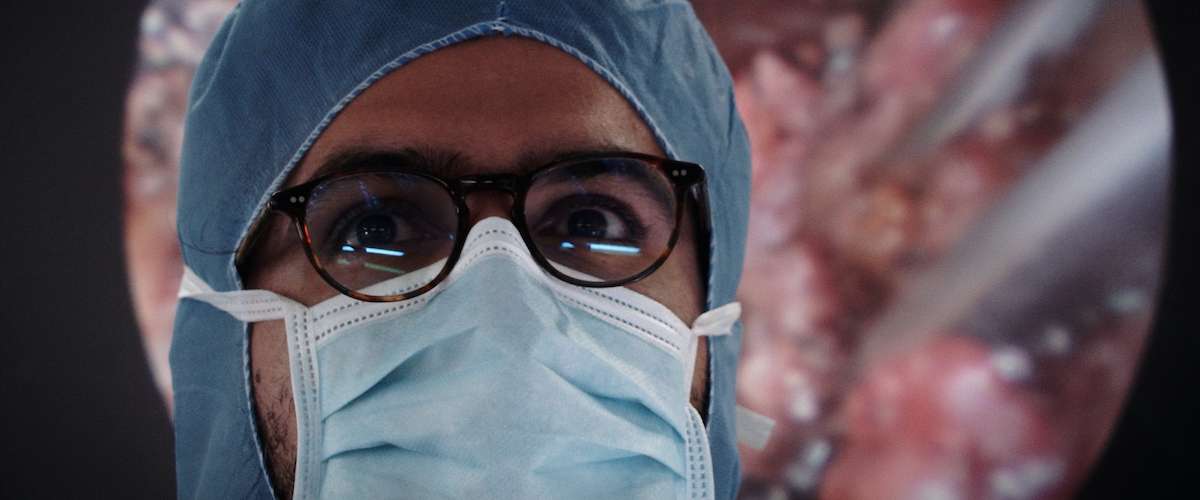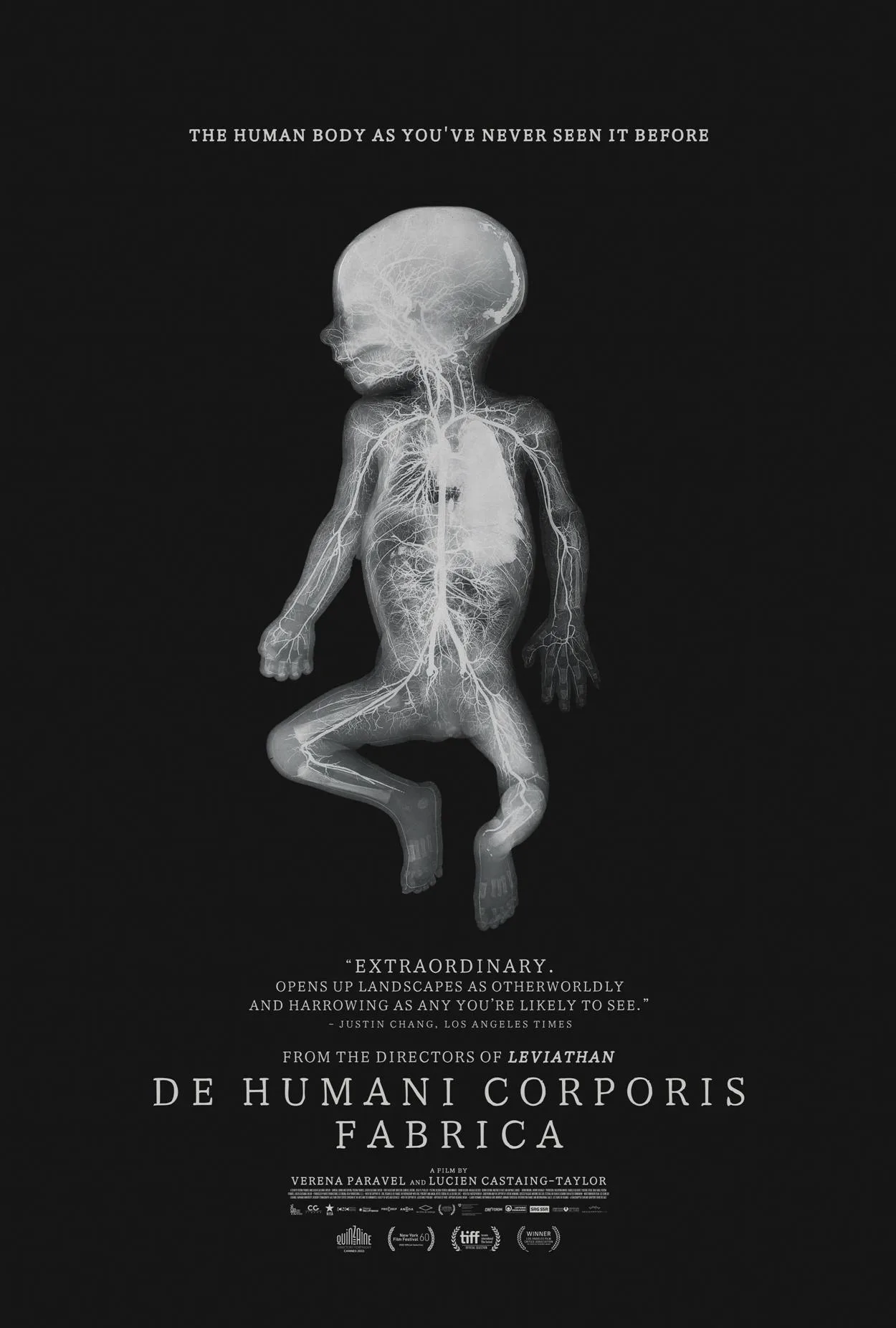In June of 2003, the much-missed founder of this website regaled his readers with this immortal prose passage about his vehement reaction to the Cannes Film Festival feature “The Brown Bunny,” directed by Vincent Gallo: “I was overheard by a writer for Hollywood Reporter, who included it in his coverage about how badly the film was received, and that is another reason Gallo has put the heebie-jeebie on my colon and prostate. I am not too worried. I had a colonoscopy once, and they let me watch it on TV. It was more entertaining than ‘The Brown Bunny.’”
Several times while watching “De Humani Corporis Fabrica,” a new documentary shot in several Paris hospitals by Lucien Castaing-Taylor and Verena Paravel, I thought of Roger and wondered what he might have thought of the movie and its entertainment value. Because through much of this film, we see through the eyes of surgeons, and those eyes are aided by micro-cameras that get right into the areas upon which they’re operating. Among the procedures are the removal (I think) of a prostate gland, some exploration of a lower intestine that’s not a colonoscopy but bears a resemblance to one, birth via cesarean section, some brain surgery, the examination of a cancerous human breast, and much more. Is it entertaining? Would Roger consider it entertaining? Would he see it at ten in the morning and consider it entertaining? Have I offended my editor at RogerEbert.com so that he’d want to send me to see this at ten in the morning? So many questions.
To consider these questions and more, and to get a little bit more serious, for this is a worthwhile motion picture, I will go back in film history a little. In 1971, the great director Stan Brakhage went into an autopsy facility with his never-averting camera eye to make “The Act of Seeing with One’s Own Eyes,” a confrontational film from the title on down (and the title itself derives from the etymological meaning of the word “autopsy”), an unstinting and somehow compassionate look at dead human flesh.
I avoided that movie for some time because the sight of actual blood and guts had long made me queasy. (My relationship to fake blood and guts, particularly in cinema, is a little more lenient, at least on a case-by-case basis.) Eventually, I came around because it’s Brakhage, and I managed to sit through it with more active engagement than I thought I’d be able to, and I was fine with it. That said, it’s not a movie I’ll likely watch again soon. But it’s one of those movies that implies and signifies a lot just because it exists.
“De Humani Corporis Fabrica”—the Latin title means “On the Fabric of the Human Body”—is not as groundbreaking a picture. But it is a compelling and possibly important one. Not so much because of what it shows, although what it shows can rightly be described as shocking and galvanic. (By the same token, it occurred to me that if you’re a meat eater, you ought to be able to handle some of the ostensibly extreme imagery.) It’s because of the proximity in which it places you to the doctors and technicians cutting up the patients. We don’t see them all that often, but we hear them. The movie opens with a dialogue of unseen women talking about the burnout they experience working in an ICU. One speaks of a young patient with an intestinal ailment that will kill him and the jarring fact that he’s been in the ICU for over 100 days. One thing that ameliorates the misery for these workers is that ICU patients are generally short-term—10 days max. It prevents them from becoming too attached to their cases. Otherwise, it’s heartache beyond what they already endure. The testimony is wrenching.
Other stuff isn’t so inspiring. The banter during a catheterization, for instance. Or the dialogue during the prostate surgery, including the repeated “that’s a huge prostate” and the one thing you definitely don’t want to hear during surgery, “I’m a little lost here.” These caretakers are all too human. The movie somehow turns that into a reason to admire them all the more.
Outside the surgery spaces, there’s awful sorrow: old patients with dementia or other forms of mental trouble wandering dimly-lit corridors, whispering “shut up” to companions who aren’t even talking, obsessively pushing elevator buttons.
Paravel and Castaing-Taylor are makers of ostensibly immersive documentaries that offer viewers little conventional guidance. There’s no narration, no chyrons telling where you are, and no talking-head interviews that provide context. You just get tossed in the pool, or the sea, as in their acclaimed 2012 “Leviathan,” an exploration of commercial fishing. I found one of their later films, the 2017 “Caniba,” about a murderer/cannibal, a hard miss and an arrogant one.
Some passages in this movie have a ring of “we’re gonna MAKE you look at this” arrogance, but I could just be projecting. As you get older, you spend a lot more time in hospitals, looking after sick and/or dying loved ones or undergoing medical procedures of your own. Ask me about my percutaneous nephrolithotomy some time! More than once while watching this picture, I thought, “I don’t need to see this—I’ve lived through it.” But I’ll be 64 this year. The college kids at my screening, attending as part of their documentary class, thought it was awesome. And it is educational. Next time you talk to someone who tells you they have a steel rod straightening out their spine, you’ll know how it got there and be glad you didn’t have to go through the process.
Now playing in select theaters.




















